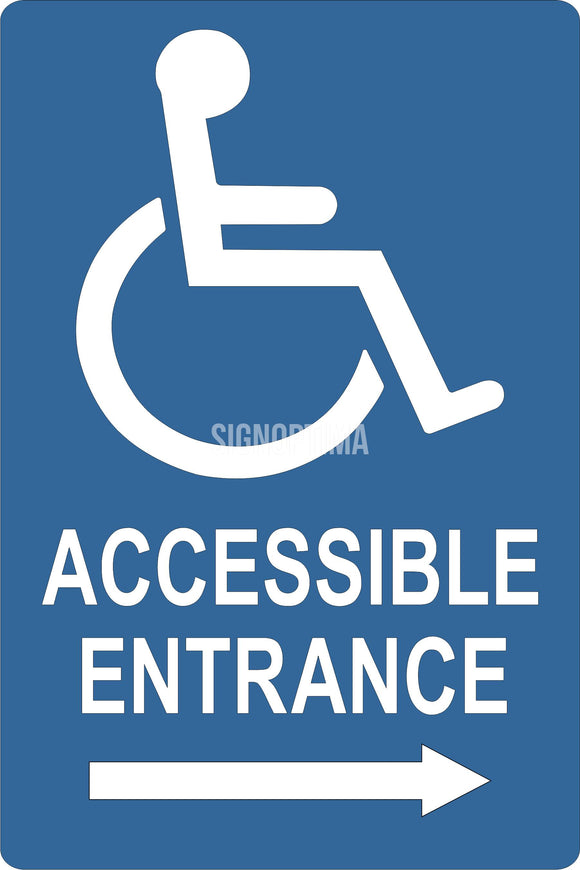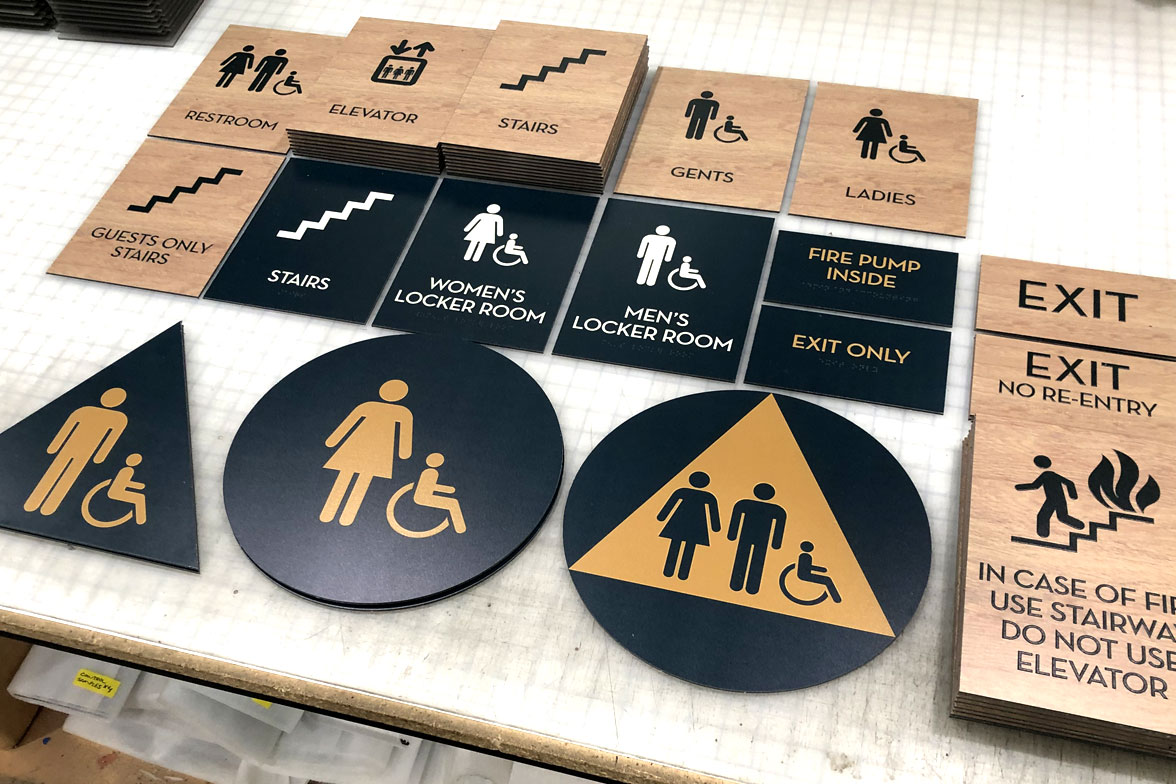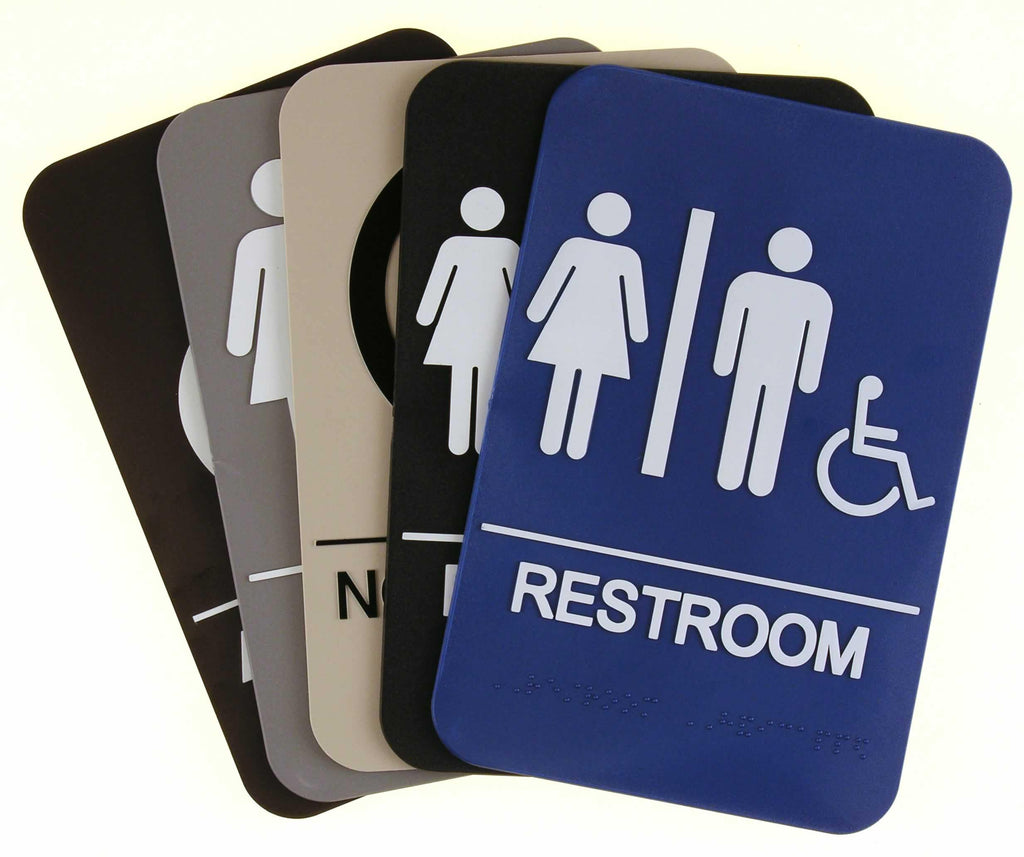Discovering Innovative Layouts for Efficient ADA Signs
Discovering Innovative Layouts for Efficient ADA Signs
Blog Article
Exploring the Secret Features of ADA Indicators for Boosted Access
In the world of ease of access, ADA indicators serve as quiet yet powerful allies, making sure that rooms are navigable and comprehensive for people with specials needs. By integrating Braille and tactile aspects, these indicators break barriers for the aesthetically impaired, while high-contrast color systems and legible font styles provide to diverse visual requirements.
Importance of ADA Compliance
Making certain conformity with the Americans with Disabilities Act (ADA) is critical for fostering inclusivity and equal accessibility in public spaces and workplaces. The ADA, passed in 1990, mandates that all public centers, employers, and transportation solutions accommodate individuals with specials needs, ensuring they take pleasure in the same legal rights and possibilities as others. Conformity with ADA standards not just meets legal obligations however also improves a company's track record by demonstrating its commitment to variety and inclusivity.
One of the vital elements of ADA compliance is the implementation of obtainable signs. ADA indications are designed to ensure that people with specials needs can quickly navigate through buildings and spaces.
Additionally, adhering to ADA laws can alleviate the risk of lawful consequences and possible fines. Organizations that fail to abide with ADA guidelines might deal with lawsuits or fines, which can be both monetarily troublesome and destructive to their public picture. Hence, ADA conformity is integral to fostering a fair environment for everyone.
Braille and Tactile Components
The unification of Braille and responsive aspects right into ADA signs symbolizes the principles of availability and inclusivity. These attributes are important for people that are blind or aesthetically damaged, allowing them to navigate public spaces with greater independence and confidence. Braille, a responsive writing system, is vital in offering composed details in a format that can be quickly regarded via touch. It is usually positioned beneath the matching message on signs to ensure that individuals can access the info without aesthetic aid.
Tactile aspects expand beyond Braille and include increased personalities and icons. These components are developed to be noticeable by touch, allowing individuals to identify room numbers, restrooms, exits, and other vital locations. The ADA sets specific standards pertaining to the dimension, spacing, and placement of these tactile elements to maximize readability and make sure uniformity across different environments.

High-Contrast Color Design
High-contrast shade plans play a critical duty in improving the visibility and readability of ADA signs for individuals with aesthetic impairments. These systems are necessary as they maximize the distinction in light reflectance between message and background, making certain that indications are easily noticeable, even from a distance. The Americans with Disabilities Act (ADA) mandates the usage of particular shade contrasts to fit those with limited vision, making it a vital aspect of conformity.
The efficacy of high-contrast colors exists in their ability to attract attention in various illumination problems, including poorly lit settings and areas with glow. Typically, dark message on a light history or light text on a dark background is used to achieve ideal comparison. For instance, black text on check my source a yellow or white background offers a plain aesthetic difference that aids in quick recognition and understanding.

Legible Fonts and Text Size
When taking into consideration the layout of ADA signs, the choice of clear font styles and proper message dimension can not be overemphasized. These components are critical for ensuring that indications are available to individuals with visual impairments. The Americans with Disabilities Act (ADA) mandates that fonts should be sans-serif and not italic, oblique, script, highly decorative, or of unusual form. These requirements aid make certain that the message is conveniently legible from a range which the personalities are appreciable to diverse audiences.
The dimension of the message additionally plays a critical role in access. According to ADA guidelines, the minimal message height should be 5/8 inch, and it should raise proportionally with checking out distance. This is especially vital in public areas where signage needs to be reviewed rapidly and accurately. Uniformity in text dimension contributes to a cohesive aesthetic experience, aiding individuals in browsing atmospheres efficiently.
Furthermore, spacing in between letters and lines is indispensable to clarity. Ample spacing stops personalities from appearing crowded, boosting readability. By adhering to these criteria, designers can dramatically enhance accessibility, making certain that signage offers its intended purpose for all people, regardless of their go to this website visual capacities.
Efficient Positioning Strategies
Strategic positioning of ADA signage is crucial for maximizing availability and guaranteeing conformity with legal criteria. Correctly positioned indicators direct people with specials needs effectively, assisting in navigation in public rooms. Key factors to consider include elevation, presence, and distance. ADA standards specify that indicators should be mounted at a height in between 48 to 60 inches from the ground to guarantee they are within the line of view for both standing and seated people. This standard height range is critical for inclusivity, enabling wheelchair users and people of differing elevations to gain access to info effortlessly.
Additionally, signs have to be put beside the latch side of doors to permit simple recognition before entry. This positioning assists individuals situate spaces and spaces without blockage. In situations where there is no door, signs need to be located on the nearest surrounding wall. Uniformity in indication placement throughout a center enhances predictability, reducing complication and improving total individual experience.

Verdict
ADA signs play an essential role in promoting access by integrating functions that resolve the needs of individuals with specials needs. Including Braille and tactile elements guarantees critical information comes to the aesthetically damaged, while high-contrast color design and readable sans-serif typefaces boost presence throughout various lighting conditions. Efficient positioning methods, such as ideal mounting heights and tactical places, additionally promote navigating. These elements collectively cultivate a comprehensive environment, underscoring the significance of ADA conformity in making certain equivalent accessibility for all.
In the world of availability, ADA indications serve as silent yet effective allies, making sure that areas are navigable and inclusive for individuals with disabilities. The ADA, established in 1990, mandates that all public centers, employers, and transport solutions accommodate people with specials needs, ensuring they enjoy the very same legal rights and opportunities as others. ADA Signs. ADA indicators are created to make sure that individuals with handicaps can quickly navigate via buildings and spaces. ADA standards state that signs must be mounted at an elevation in between 48 to 60 inches from the ground to guarantee they are within the line of sight for both standing and seated people.ADA indications play a vital function in promoting availability by integrating attributes that deal with the demands of individuals with handicaps
Report this page